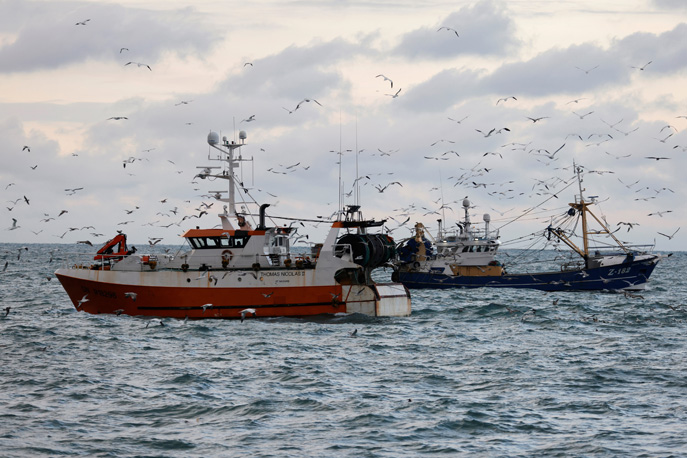In his new monthly column, Mark Hillsdon looks at the nature agenda for civil society groups in the year ahead
Biodiversity loss has been trying to force its way up the international agenda for several years. Before being overtaken by the pandemic, 2020 was originally dubbed a “super year for nature”. And while the much-postponed Conference on Biological Diversity (CBD), also known as COP15, did finally take place last year, it was online and largely over-shadowed by the climate COP in Glasgow in November.
But over the next few months, first in Geneva, and then possibly returning to Kunming, China, the CBD will reconvene, this time in person, to look at a draft framework for biodiversity. This will include setting targets for protecting marine and land habitats, reducing pesticides and plastic waste, and increasing investment.
Urgency at the talks will be heightened by the World Economic Forum’s annual Global RiskS Report, which pushed biodiversity loss up to third place, while a second WEF report, BiodiverCities by 2030, revealed that 44% of urban gross domestic product (GDP) is estimated to be at risk of disruption from nature loss.
But with the majority of future urban expansion forecast to be in the world’s biodiversity hotspots, cities need to act to rebalance their relationship with nature.

Linda Krueger, global biodiversity policy lead at the Nature Conservancy, says bringing mainstream attention to the agenda will be key to making COP15 transformational. Agriculture needs to be involved, she says, and infrastructure projects have to have neutral impacts on biodiversity, at the very least. Supply chains need to be cleaned up too, eliminating deforestation and habitat loss. “You need companies to understand what’s at stake,” she said.
The summit also needs to deliver a clear regulatory framework for business, creating a level playing field that doesn’t unfairly penalise those that are already taking a lead. “Business is way behind on biodiversity compared to where they are on climate,” Krueger says.
Abigail Entwistle, senior conservation director at Flora & Fauna International, agrees that private and public sector decision makers should be treating the climate crisis and biodiversity loss as two halves of the same problem.
The nuance needs to be right, so we are not creating global inequalities
At the moment they are often managed by two different teams, whose decisions can be counterproductive. For instance, while tree planting may seem a simple and cost-effective way to soak up carbon and support a country’s national determined contribution (NDC), done badly it can be disastrous for biodiversity. (See Mastercard’s Kristina Kloberdanz on why companies have to plug the ‘trust gap’ on climate promises)
The only signatures missing from the CBD are those of Andorra, Iraq, Somalia and, somewhat surprisingly, the United States, which declined to join in the 1990s. But the Nature Conservancy’s Krueger says conservation is now a bipartisan issue on Capitol Hill. A new Great American Outdoors Act was eased through during the dying days of the Trump administration, pledging $900 million a year to protect and expand access to public land.
And Joe Biden is backing the 30x30 agenda, dubbed the America the Beautiful initiative, which aims to protect 30% of land and sea by 2030 and which was heavily promoted at the first part of COP15.
But 30x30 risks inadvertently impacting those who depend on the land for their day-to-day subsistence. “The nuance needs to be right,” Krueger says, “so we are not creating global inequalities. “What we really want to see are that the rights of … indigenous people, and the opportunities that they have to lead conservation, are recognised at a global level.”

A report last year from Primsa, (Programa Regional de Investigacion sobre Desarrollo y Medio Ambiente) found that deforestation rates in indigenous territories in the Amazon are two to three times lower than in similar non-indigenous lands across several South American countries.
Yet indigenous people have secure tenure over only 10% of the lands they occupy under customary ownership, and at least a quarter of their lands are under threat from industrial agriculture and illegal activities like logging, mining and hunting.
In Ecuador, indigenous groups have in recent years won lawsuits in local courts to suspend mining and oil exploitation in territories where they have land rights. Another lawsuit, currently before Ecuador’s Constitutional Court, demands guarantees for their right to prior and informed consent on extractive projects, and could set a global precedent, indigenous rights groups say.
Where I think COP can succeed is pushing for a phasing out of agricultural subsidies
But Christian Poirier, programme director at Amazon Watch, says his hopes for COP15 are dampened by spiralling deforestation rates in Brazil, where President Jair Bolsonaro’s “obstructionist government” has never shown any interest in international cooperation around conservation, he says.
“What we need to see is the Bolsonaro government out of power,” he says, and with 2022 an election year in Brazil, that remains a possibility.
“Where I think COP can succeed is pushing for a phasing out of agricultural subsidies,” Poirier adds. This money, currently worth round $500 billion a year, “could actually resource some of the programmes in developing countries for biodiversity conservation”.
One area of biodiversity that can slip off the corporate radar is the oceans, often because they’re not directly involved with supply chains. But this year several major events, including a United Nations Ocean Conference in Portugal June, are set to champion the health of our seas.

Speaking at a recent event convened by global conservation organisation Campaign for Nature, marine conservationist and explorer-in-residence at the National Geographic Society Enric Sala said that it was crucial to remember that the 30x30 goals apply to the seas. too.
At the moment, he stressed, just 3% of the oceans – a far cry from the planned 30% – are highly protected, meaning that activities such as commercial fishing are completely banned. But in those zones that do have this higher level of protection, he said, fish species are bouncing back by as much as 600%, which can help restore fish stocks in surrounding areas and help local indigenous people.
The other benefit of these marine safe havens, he added, is that “restoring marine life and stopping damaging activities like bottom trawling would also help us to avoid carbon emissions and increase the sequestration potential of the oceans.”
From polluting fish farms to mining the sea-bed for minerals; companies need to ensure that their activities aren’t leading to more irreversible change, he stressed.
Main picture credit: Washington Alves/Reuters
This article is part of the February 2022 issue of Sustainable Business Review. See also:
Policy Watch: Why global progress on climate may hinge on Biden’s Build Back Better bill
Brand Watch: Will 2022 be the year that sustainable consumption finally takes hold?
ESG Watch: Disclosure pressures to grow as investors push for transparency and a just transition
Mastercard’s Kloberdanz on why companies have to plug the ‘trust gap’ on nature
Made in Turkey: Arçelik’s CEO tries to flip the switch on CO2 emissions
Conference on Biological Diversity COP15 WEF BiodiverCities by 2030 Nature Conservancy tree planting 30x30 agenda Amazon Watch

